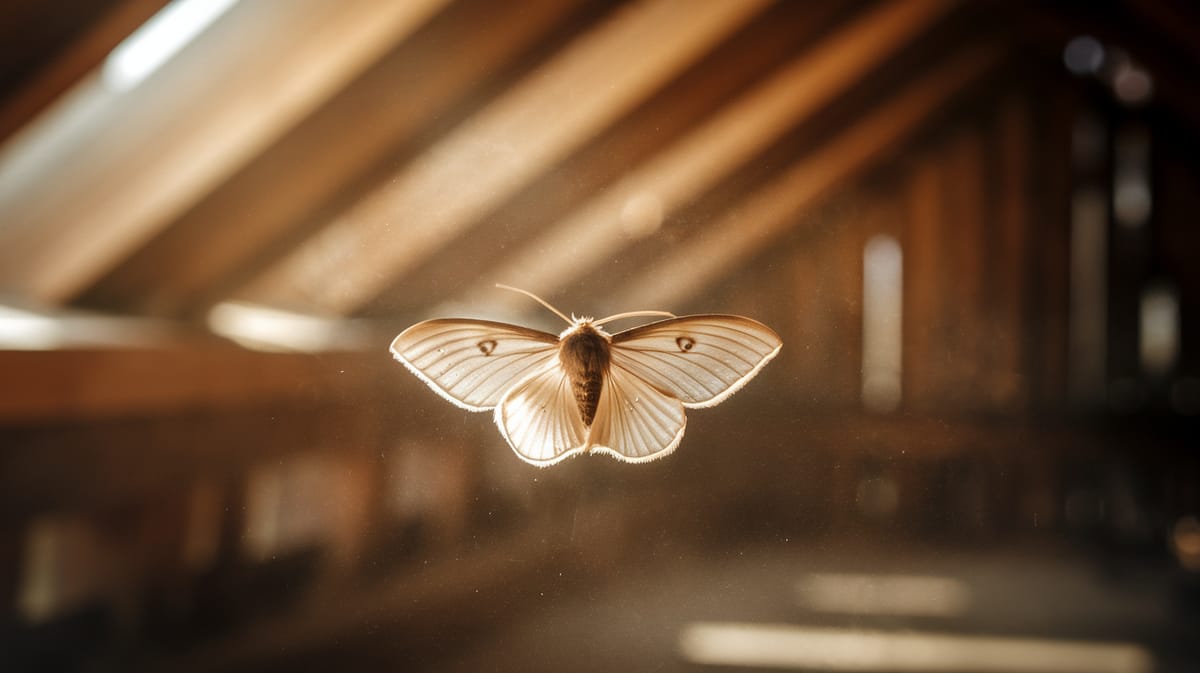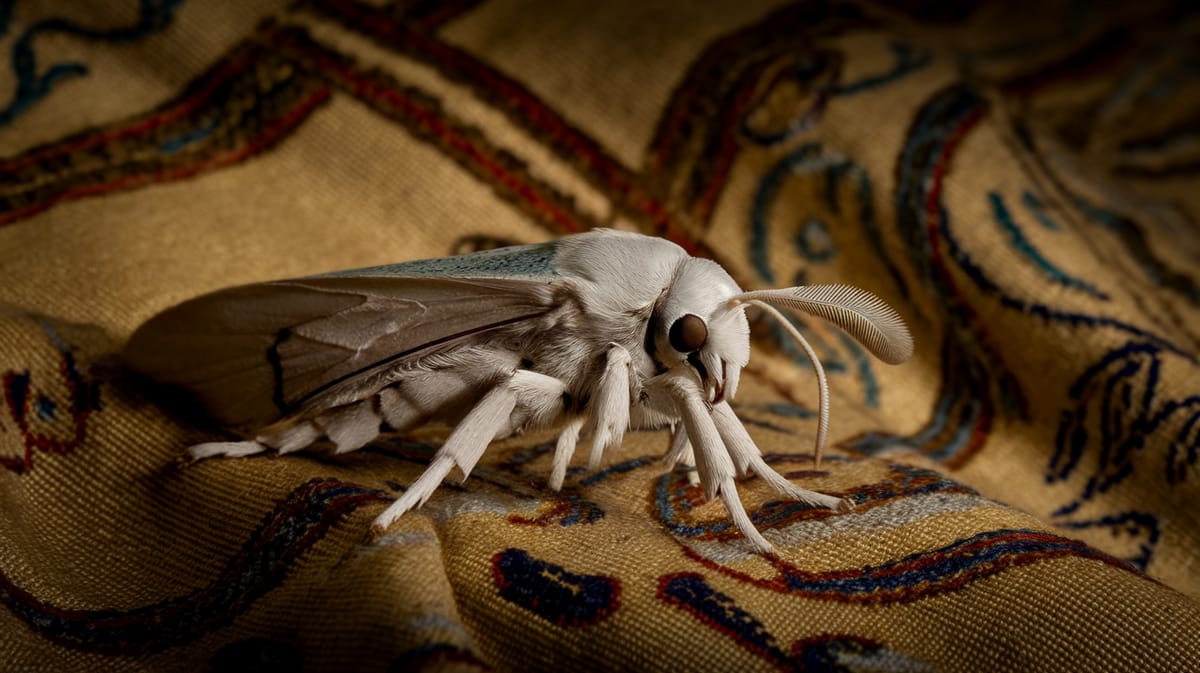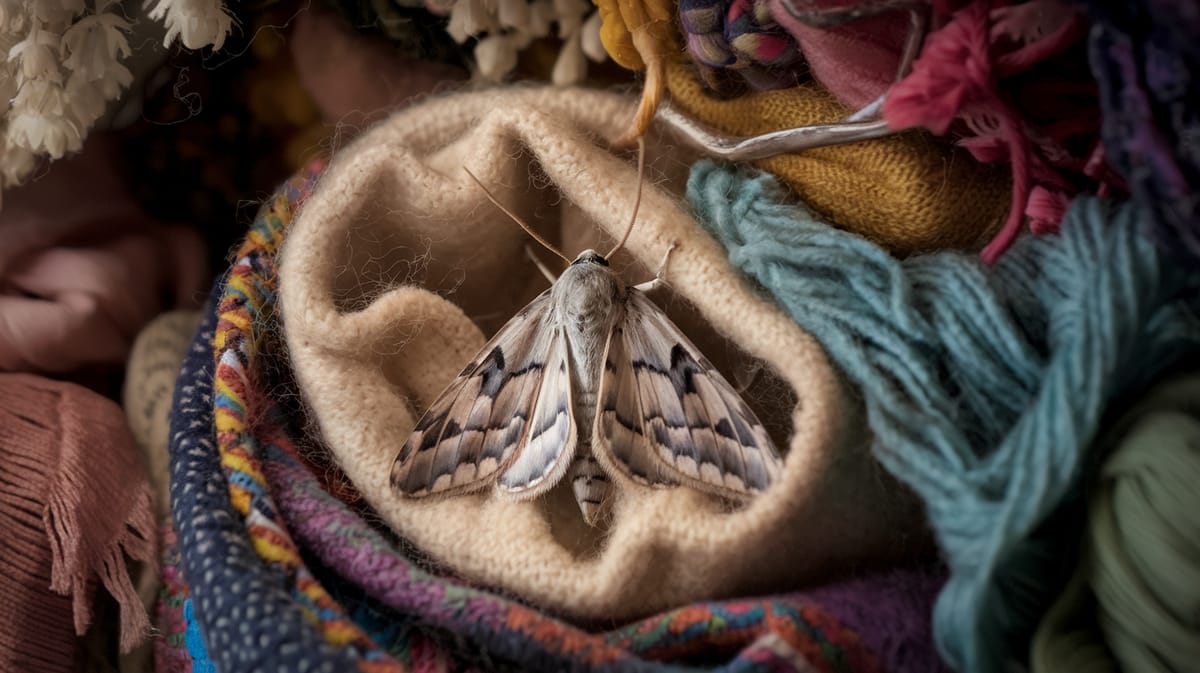Common Clothes Moth
Silent invader of wardrobes, the Common Clothes Moth thrives in darkness, feeding on natural fibers like wool and silk. This tiny moth plays a surprising role in the ecosystem by recycling keratin.

Key Insights at a Glance
Did You Know?
Taxonomy & Classification
The Common Clothes Moth plays a key role in natural decomposition, specializing in breaking down keratin-rich materials with its unique feeding habits. Let's understand the evolutionary journey and classification of these remarkable decomposers.
Global Presence
The Common Clothes Moth, Tineola bisselliella, is found worldwide, thriving in dark, undisturbed areas of homes and storage spaces.
Evolutionary Adaptation
Originating in Europe, these moths have adapted to human environments, exploiting our materials to survive despite changing climates and habitats.
Lifecycle and Growth
A remarkable journey of transformation from Egg to Adult.
Egg
Eggs are laid in dark, undisturbed areas, hatching into larvae that begin feeding on natural fibers.
Larva
Larvae voraciously consume keratin-rich materials, causing significant damage to fabrics and growing rapidly.
Pupa
Pupation occurs within silken cocoons, marking the transition from larva to adult moth.
Adult
Adults emerge, focusing on reproduction and laying eggs, without feeding.
Dietary Habits
A persistent scavenger with a taste for natural fibers, this insect thrives by consuming keratin-rich materials like wool and fur.
| DIET TYPE | DESCRIPTION |
|---|---|
| Primary Diet | Primarily feeds on wool, silk, feathers, and fur, digesting keratin with specialized enzymes. |
| Secondary Diet | Occasionally consumes cotton or synthetic fibers, especially when stained with food or sweat residues. |
| Occasional | Rarely feeds on dead insects or dried plant materials, adapting to less ideal conditions when necessary. |

Behaviour and Adaptations
Discover the fascinating adaptations that enable the Common Clothes Moth to thrive in human environments.
Fabric Feasting
Efficiently digests keratin from wool, silk, and other fabrics for sustenance.
Nocturnal Activity
Primarily active at night, which reduces predation risk and increases feeding chances.
Pheromone Communication
Uses pheromones to locate mates in the dark, ensuring reproductive success.
Ecosystem Impact
The Common Clothes Moth plays a key role in ecological balance and nutrient cycling.
Nutrient Recycler
Breaks down organic materials like wool and feathers, aiding decomposition.
Food Source
Serves as prey for birds and small mammals, supporting biodiversity.
Microhabitat Maintainer
Contributes to microhabitat health by consuming decaying organic matter.
Conservation Challenges
Understanding and addressing the major threats to Common Clothes Moth populations.
Chemical Exposure
Residual chemicals from cleaning agents and pesticides harm moth populations.
Habitat Loss
Urban development and modernization reduce suitable environments for moths.
Climate Change
Altered climate patterns affect moth breeding and survival.
Frequently Asked Questions
How long do Common Clothes Moth live?
Common Clothes Moths typically live for about 65-90 days from egg to adult. The adult moth can live for 15-30 days, mainly for reproduction purposes. The lifespan may vary depending on environmental conditions like temperature and humidity.
What do Common Clothes Moth eat?
Common Clothes Moths mainly feed on natural fibers such as wool, silk, and fur. They are particularly attracted to clothes and fabrics that are soiled with sweat or food stains, as these provide essential nutrients for their development.
Are Common Clothes Moth poisonous?
Common Clothes Moths are not poisonous. They do not pose a direct threat to humans or pets. Their primary nuisance is their ability to damage natural fibers in clothing, carpets, and upholstery.
Are Common Clothes Moth endangered?
Common Clothes Moths are not endangered. They are quite prevalent in many households worldwide. Instead of facing extinction, they are often considered pests due to their destructive habits regarding fabrics.
What do Common Clothes Moth symbolize?
In some cultural contexts, Common Clothes Moths symbolize decay or neglect due to their association with damaged clothing and textiles. They can represent the idea of things being worn away over time or the need for care in maintaining possessions.
Do Common Clothes Moth bite?
Common Clothes Moths do not bite humans or animals. They do not have the mouthparts necessary for biting. Their larvae are responsible for fabric damage, feeding on fibers rather than biting living creatures.
What color are Common Clothes Moth?
Adult Common Clothes Moths are typically a light brown or beige color. They have a golden sheen on their wings, which can make them appear slightly shimmering in certain lights. This coloring helps them blend into their surroundings.
Does a Common Clothes Moth have wings?
Yes, Common Clothes Moths have wings. Adult moths have two sets of wings covered with tiny scales. These wings enable them to fly, but they are not strong fliers and tend to move in a fluttery manner.
What does a Common Clothes Moth look like?
Common Clothes Moths are small, about 6-8 mm long, with a wingspan of 9-16 mm. They have narrow wings fringed with long hairs. Their body and wings are a golden or buff color, making them hard to spot.
Is a Common Clothes Moth an insect?
Yes, the Common Clothes Moth is an insect. It belongs to the order Lepidoptera, which includes all moths and butterflies. As an insect, it has three main body parts: the head, thorax, and abdomen, along with six legs and two antennae.
Related Insects
Discover insects with similar characteristics to Common Clothes Moth - including shared habitats, diets, and taxonomic classifications
Share this profile
Help others discover Common Clothes Moth
